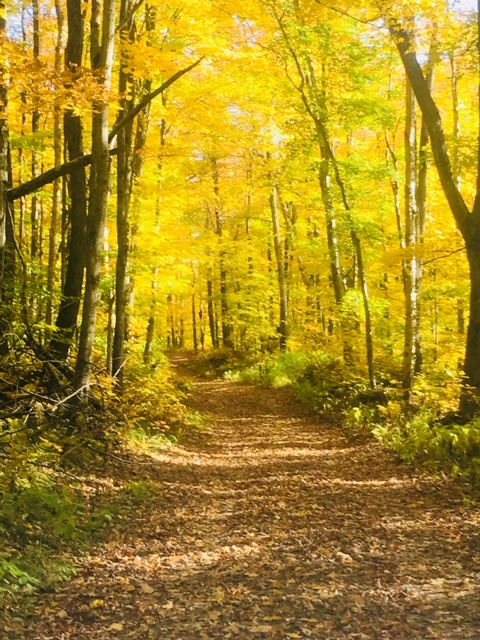Saving a shot for the greater good

It is dusk on a glorious October evening. I am sitting quietly in my tree stand 15 feet above a well-worn deer trail. When I was younger, I would breathe the thinner air 25 and 30 feet up, but now, as I have ripened to the age of 61 years, I find it almost masochistic to climb up to even 15 feet. You see, typically whitetail deer do not look up, but my experience has been that if I can elevate my scent trail to the currents that flow above them, I am much more concealed. As I sit on the aluminum seat with a pad under my bony behind, I marvel at the foliage around me. It feels like I am in the hall of the mountain king surrounded by golden arches of fluttering leaves. When the gentle wind rocks the upper branches I can hear the plop-plop-plop of acorns hitting the dry ground below me. The earth is scraped up from squirrels during the day competing with deer in the evening for the nutritious mast crops of beech, white and red acorns, hickory, and butternuts.
I am in a perfect state of grace. I am tied to the trunk of the tree and we sway together. I breathe the crisp clean northern breeze, carrying fragrances of decaying leaves and nuts. I can smell the raw earth—its musty diatomaceous aroma. A whiff of lake air wraps around my face. It is the lake turning over and surrendering the summer vegetation to the surface.
In the distance a twig snaps. I turn my head slowly in the direction of the sound and stare through the brush and trees. I see nothing. But I sense that something is nearby. Could it be a squirrel? No. Squirrels don’t snap twigs when they jump on them. Could it be a coyote? A bear? A fisher cat maybe? Or, could it be what I am here to see? Minutes pass and my heart begins to pace a little faster. Another twig breaks. Then a snort. A short burst of air from an animal’s nose to clear its nasal passages so that it can breathe in any scents that are being blown through the woods. It is then that I know that this is a whitetail deer. And he (or she) is testing the currents to learn what is up ahead before he/she walks forward into the wind.
Then a stomp. A loud thud against the dry earth. That’s when I see it. The hoof hitting the ground. Just a short section of a front leg, the shank of the deer. It steps forward and its body is revealed from behind the fiery red bush. It picks up its head to sniff the air again and that is when I see the rack. It’s a buck. I do not look closely at the antlers to count the points. I know it’s a good size rack, but I have learned that if I stare at the horns my focus will not be where I need it to be.
He moves further down the trail toward me. I stand slowly as his head passes behind the large trunk of a maple. I am standing now, and my bow is in my hand. My release is clamped onto the nocking point on my bowstring. I stand on my narrow platform fully camouflaged in 3-D leafy fabric. Every inch of my body is covered. The buck continues walking toward me and stops to graze on some of the acorns under a nearby oak. He puts his head down to feed, then picks it up and I can see him chewing the nuts. His jaws move from side to side, grinding the tasty white acorns. He walks further toward me and is now right under my stand. My heart is beating wildly. I can feel my pulse in my ears. I watch as he walks under my stand and never draw my bow.
“Why?” you might ask. Because the property that I hunt on has a very large whitetail population, and it is destroying the native vegetation. The herd is too large for the carrying capacity of the land. That means that there is not enough food for the number of deer on this property, and their health is beginning to suffer from it. So, as a conservationist and someone who loves these animals enough to study them and understand their habits and ecosystem, I have sworn to the landowner that I will not shoot a buck until I have harvested at least one doe. It is our duty as conservationists that we harvest these beautiful beings not for our own ego, but in the best interest of the herd. If there are 20 does on this property and each of them has an average of two fawns, the population grows out of control very quickly. So, as a part of my promise, I adhere to the rules and let this big bruiser walk by.
Perhaps tomorrow evening I will see a doe and take my shot. But for tonight, I have experienced the awesome beauty of a majestic beast. And I honor his life. This, my friends, is what “sacred hunting” is all about.
Bradley Carleton is executive director of Sacred Hunter, a nonprofit that seeks to educate the public on the spiritual connection of man to nature.

